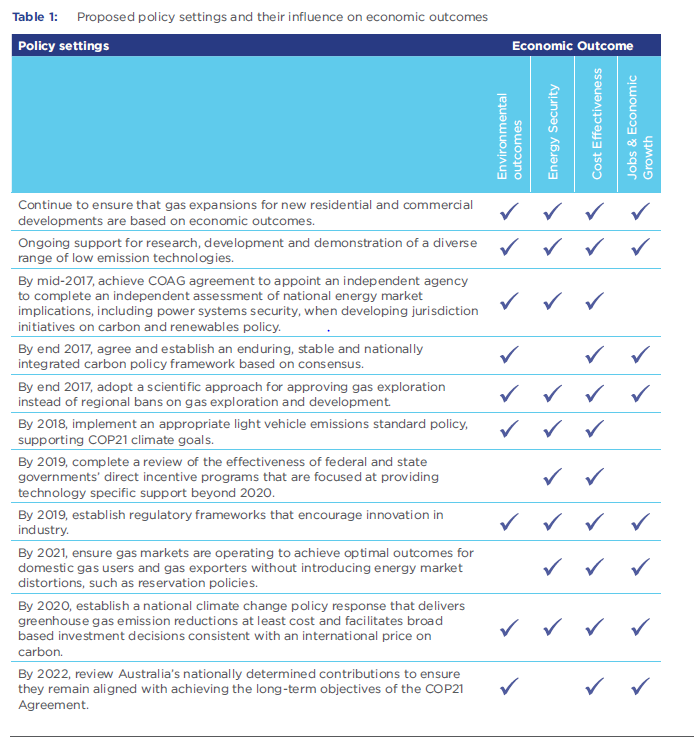Media release – Technology can strengthen Australia’s gas advantage
Technology can strengthen the role Australian gas plays in the diverse energy mix beyond 2030 as outlined in a new vision to be launched today by the gas industry.
Gas Vision 2050 was developed by Australia’s peak gas industry bodies and demonstrates how gas can continue to provide Australians with reliable and affordable energy in a low carbon energy future.
The vision will be presented to the Minister for the Environment and Energy, Josh Frydenberg, and the Minister for Resources and Northern Australia, Matt Canavan, in Canberra today.
Energy Networks Australia Gas Committee Chairman Ben Wilson said Australia’s gas supply and infrastructure should be a national advantage as our energy mix continues to evolve.
“The gas supply chain is working constructively with the Government to provide the energy security Australia needs today. We also recognise the need to plan for the longer-term,” Mr Wilson said.
“Three transformational technologies – biogas, hydrogen and carbon capture and storage – could provide new zero-emission and low emission fuels that can deliver power to Australian homes, businesses and vehicles using the existing distribution network.”
Biogas, for example, can make use of landfill to produce net-zero emission fuel for mainstream use. Mr Wilson said that in the future, zero-carbon hydrogen from renewables can also be delivered in the gas network.
“This has the potential to further reduce the carbon footprint of gas and complement the vital support gas already provides to intermittent renewables for power generation,” he said.
“Australia’s gas infrastructure can store the same amount of energy as six billion Powerwall batteries.”
The power sector is the largest gas consuming sector, accounting for 40% of worldwide gas demand today. The International Energy Agency recognises that gas is less carbon intensive than coal or oil and notes that gas-fired technologies have a far lower capital cost compared to coal generation.
Mr Wilson said new technology will drive the decarbonisation journey of gas.
“We need a technology-neutral policy environment to allow industry to research, develop and demonstrate a diverse range of low emission technologies.”
APPEA Chief Executive Dr Malcolm Roberts said natural gas has a pivotal role to play as we continue the move to a low‑carbon economy, both in Australia and around the world.
“Substituting gas for more emissions intensive fuels is essential to achieving climate change targets,” Dr Roberts said.
“As a cleaner fuel, natural gas is also helping to reduce global greenhouse gas emissions. Australia’s liquefied natural gas exports are replacing fuels that have far higher emissions.”
APGA Chief Executive Cheryl Cartwright said gas is a crucial part of Australia’s energy system, with gas and electricity supplying similar amounts of energy to households, commerce and industry.
“We have no viable alternative for some of its industrial uses such as making glass, bricks and other building products,” Ms Cartwright said.
“Our existing natural gas transmission and distribution pipelines effectively make up a large energy storage system, and this can provide a way of storing renewable energy in the future.”
Today, natural gas provides 44% of household energy for only 13% of household emissions.
Deloitte estimates that gas used by industry in Australia supports 949,000 jobs.
Gas Energy Australia CEO John Griffiths said gas also provides an affordable, lower emission transport fuel as well as a reliable, cleaner opportunity for distributed energy and off-grid generation.
“There are 380,000 gas powered vehicles in Australia today and there are commercially attractive opportunities for switching to gas in the transport and mining sectors,” Mr Griffiths said.
“Gaseous fuels such as CNG, LNG and LPG enable regional and remote communities to enjoy the many benefits of gas and can also provide emergency energy supplies in response to natural disasters.”
GAMAA President Andrew Creek said natural gas will continue to be a critical part of Australia’s energy mix leading up to 2050 and beyond.
“As industry leaders we must encourage innovation and efficiency within the energy sector to provide Australian households and businesses with the reliable and affordable power they expect,” Mr Creek said.
“The Gas Vision 2050 reflects that ambition.”
The policy settings proposed in the Vision are outlined in the table below.
The Gas Vision 2050 is available here.
ENDS
Media contacts
Energy Networks Australia: Taryn Bevege 0447569029 tbevege@energynetworks.com.au
APPEA: Kieran Murphy 0408151922 kmurphy@appea.com.au
APGA: Cheryl Cartwright 0419 996 066 ccartwright@apga.org.au
Gas Energy Australia: John Griffiths 0439344622 jgriffiths@gasenergyaustralia.asn.au
GAMAA: Andrew Creek 0418 559 662 ACreek@sitgas.com.au

The Gas 2050 Vision has been developed by Energy Networks Australia, Australian Petroleum Production & Exploration Association, Australian Pipelines and Gas Association, Gas Energy Australia and Gas Appliance Manufacturers Association of Australia.